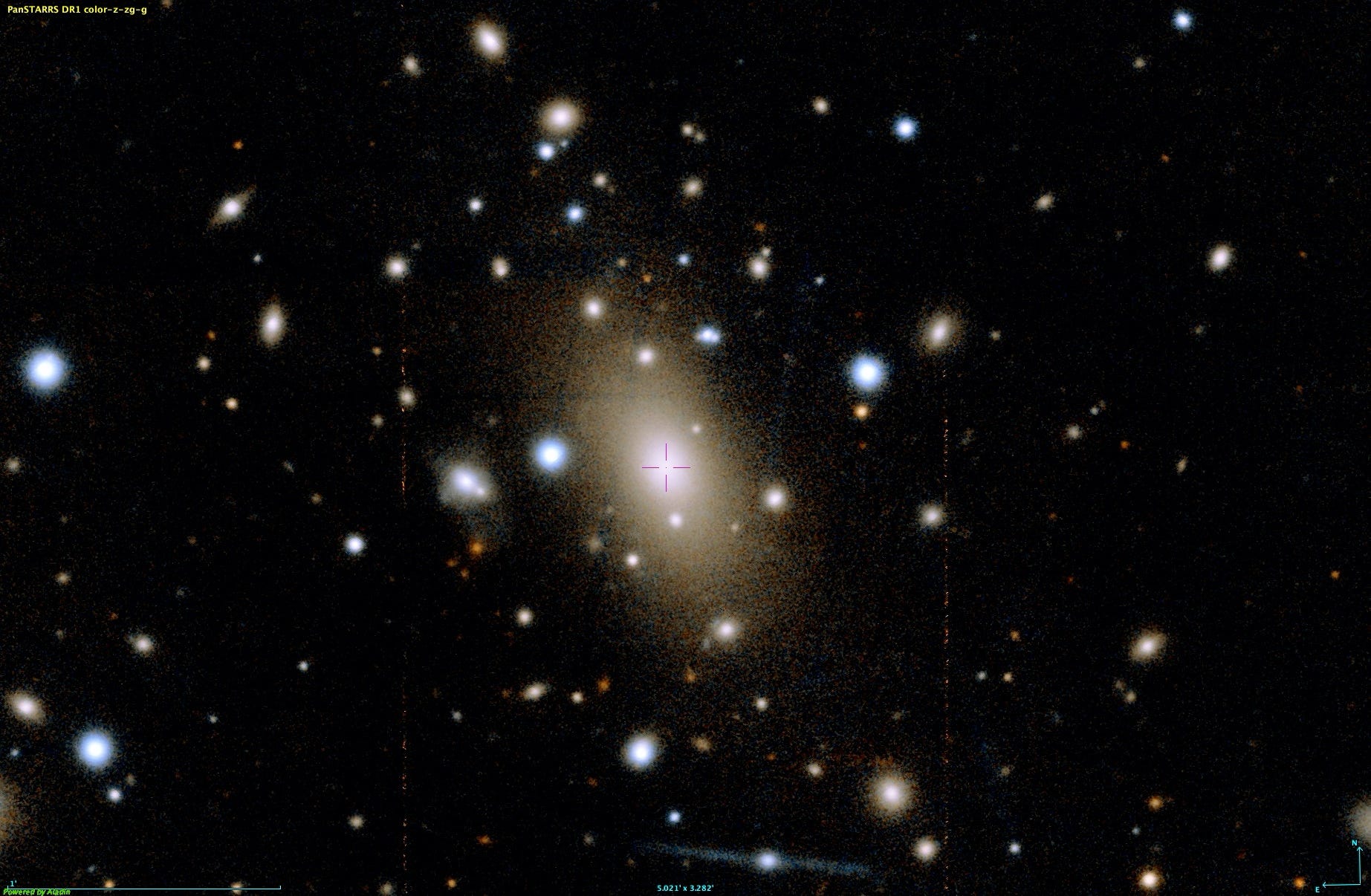Messier Monday: A Perfectly Calm Spiral In A Gravitational Storm, M88
A beautifully undisturbed, large spiral can be found right at the heart of the Virgo Cluster.
“We’ll ride the spiral to the end and may just go where no one’s been.” -Tool
As the Moon wanes towards new, you’ll have dark skies progressively later and later into the night, perfect conditions for galaxy-hunting! With the Virgo Cluster rising progressively earlier in the night as we head into (northern hemisphere) spring, it’s my pleasure to share with you one of the many galactic highlights contained therein for our Messier Monday!
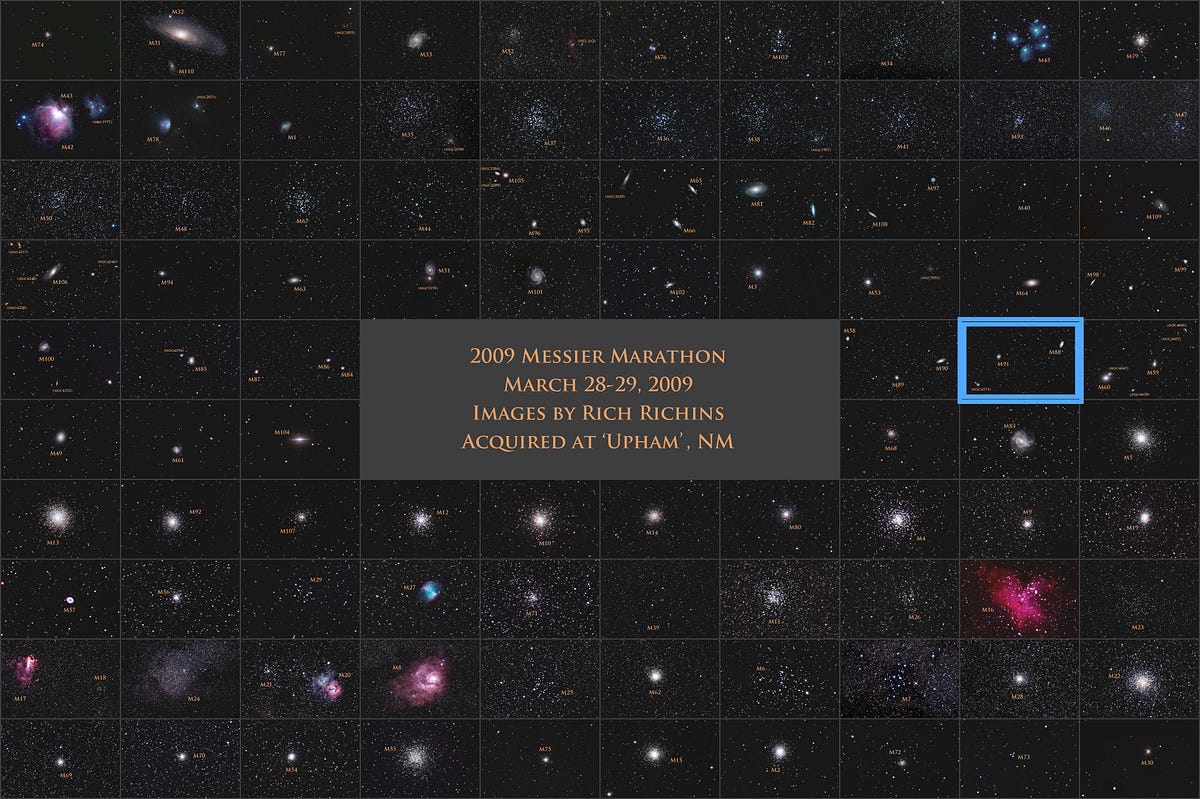
Located 50-to-60 million light-years distant, the galaxies of the Virgo Cluster are all gravitationally bound to one another. With well over 1,000 galaxies in there, many of them are interacting, show evidence of recent mergers, or have long since settled into giant, red elliptical galaxies: the same fate our far future holds for our local group!
But if you look at the right place in Virgo, there’s a large, Milky Way-sized galaxy all by its lonesome, undisturbed by the chaos surrounding it. Come meet Messier 88, and let’s discover how to find it together!
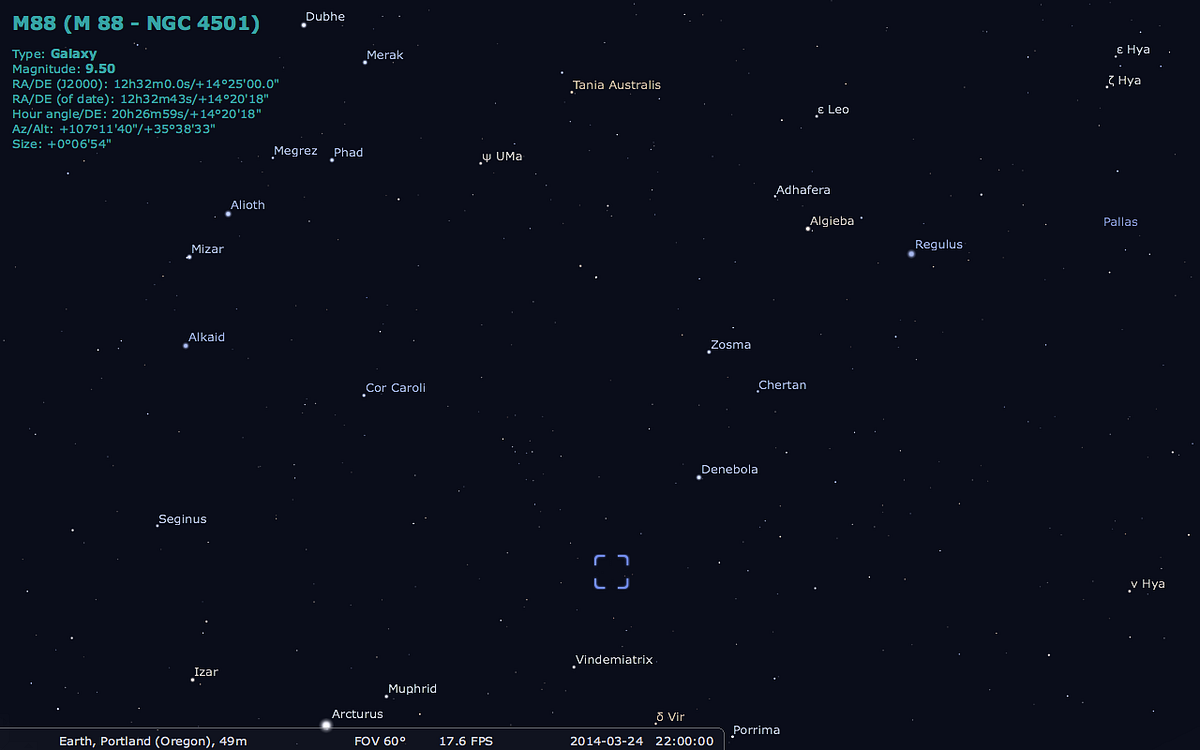
The unmistakeable cup-and-handle of the Big Dipper is the most famous and easy-to-spot of the northern hemisphere star patterns, and “below” it sits the constellation of Leo, headlined by its two brightest members: Regulus and Denebola. If you connect that imaginary line — from Regulus to Denebola — and continue on, the next prominent star you’ll find is Vindemiatrix.
And if you look in the region between Denebola and Vindemiatrix, a little star-hopping will guide you to Messier 88.
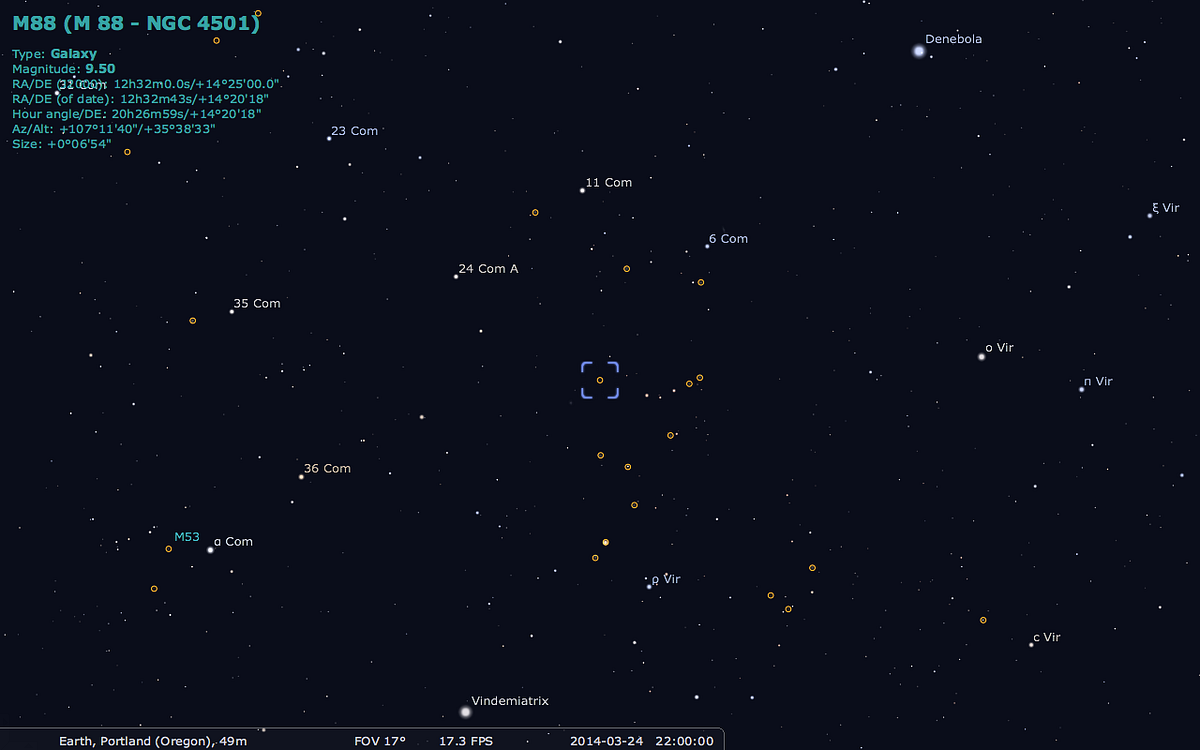
Although there are many stars in this region, very few are visible to the naked eye, and none of them are at all prominent. But if you can find the “cross” pattern, where the stars 11 Comae Berenices and ρ Virginis make the “long” side (and 6 Comae Berenices and 24 Comae Berenices make the “short” side), you won’t be able to miss it.
If you point your telescope (or an excellent pair of binoculars) midway down the long side of that cross — halfway between 11 Comae Berenices and ρ Virginis — you’ll find a few faint stars invisible to the naked eye, and a whole plethora of faint, cloud-like objects. Each one of those is a galaxy, and one of them is today’s object: Messier 88.
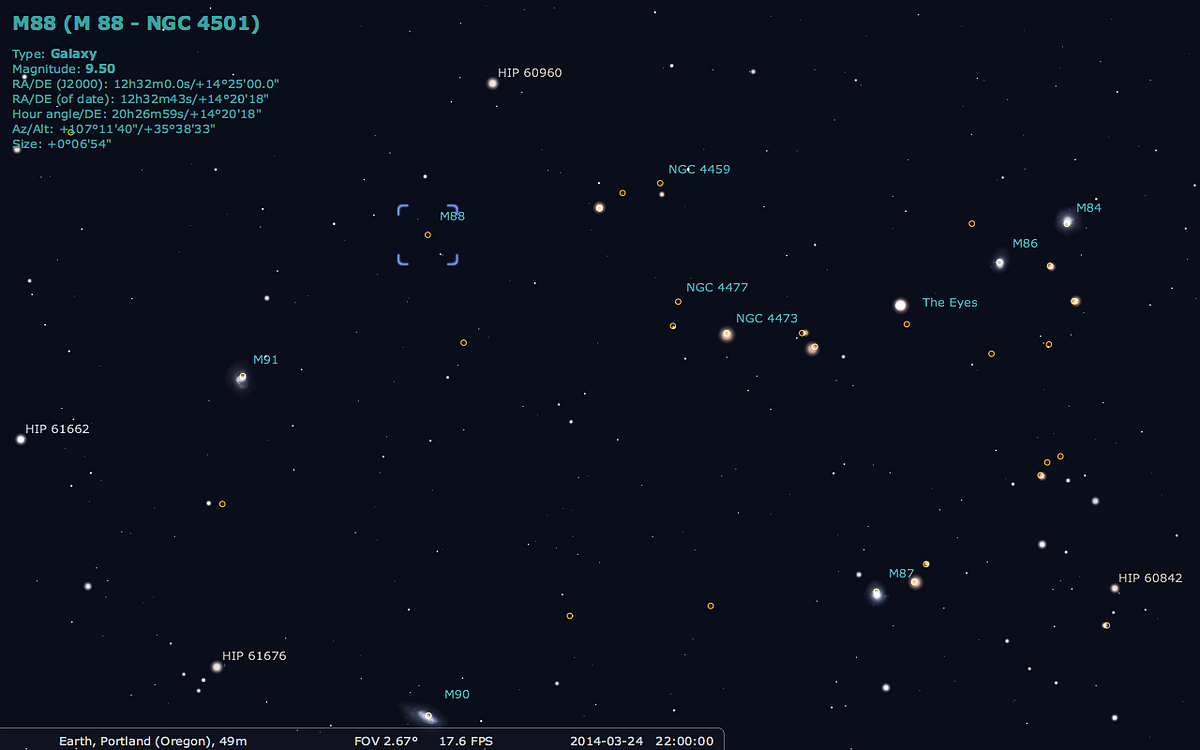
The most prominent individual star in this region is HIP 60960, and just a fraction of a degree away away from it (towards Vindemiatrix) lies Messier 88. This is a faint galaxy whose properties were unknown to Messier himself, who discovered it along with eight other Messier objects on March 18, 1781. As he described it:
Nebula without star, in Virgo, between two small stars & one star of the sixth magnitude, which appear at the same time as the nebula in the field of the telescope. Its luminosity is one of the faintest, & resembles the one reported in Virgo, No. 58.
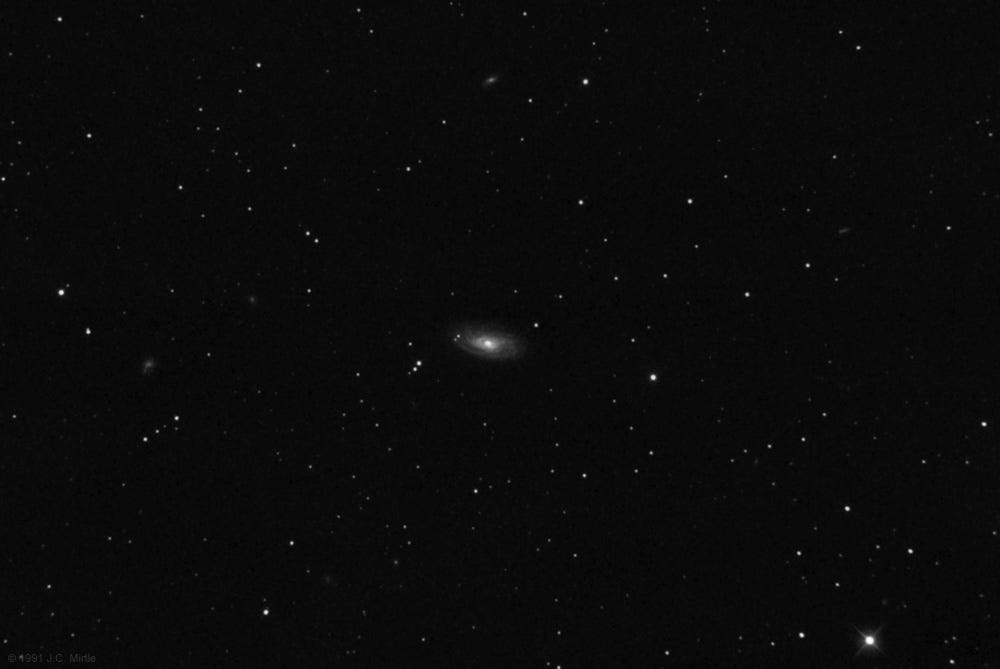
Through even an 8″ (20 cm) modern telescope, it’s a challenging task to make out all but the coarsest details of this galaxy. You see, it is faint and it is relatively small, but that’s only due to its tremendous distance! In reality, it’s around 130,000 light years in diameter, or about the same size as Andromeda, our Milky Way’s bigger sister.
But with a little bit better magnification, this galaxy really shines.
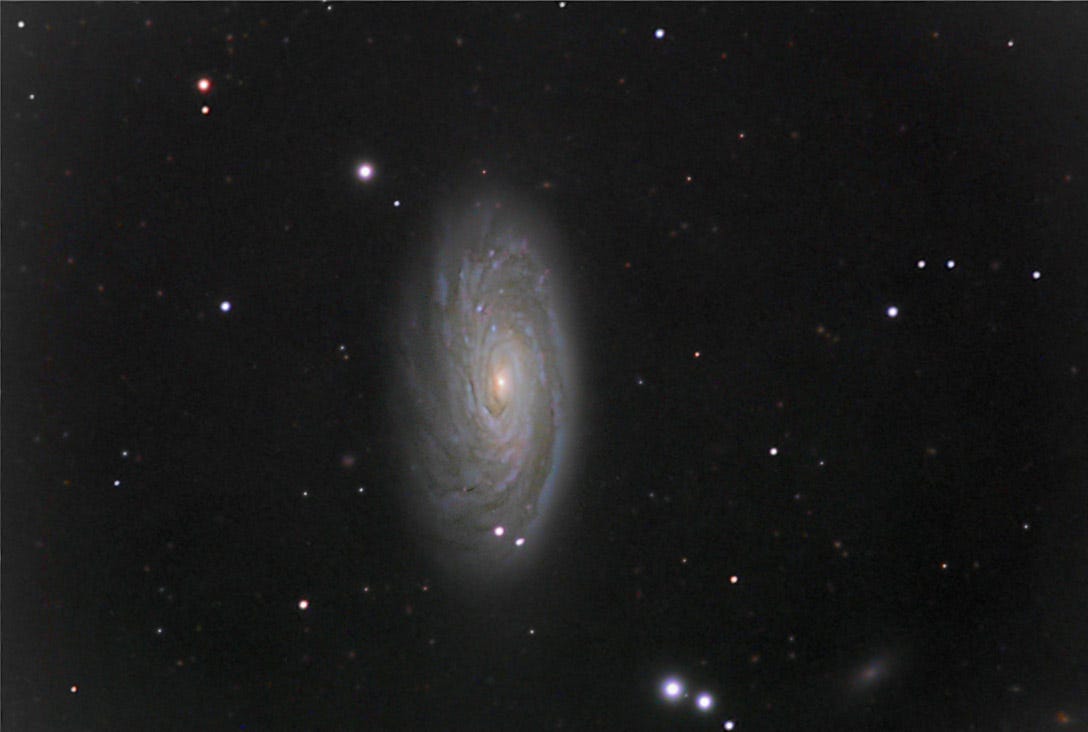
Its dusty, well-defined arms spiral all the way in to the center; its bright nucleus is the most luminous part of the galaxy; it rotates more quickly than our own galaxy with speeds of 241 km/s; it recedes from us at more than 2,000 km/s, one of the fastest-moving members of the Virgo Cluster.
And yet, it’s a little bit closer to us than most galaxies in Virgo, as it appears to be diving towards the cluster’s center. It’ll miss, mind you, but this motion combined with its current position places it remarkably close to Virgo’s most central concentration of big, bright galaxies.
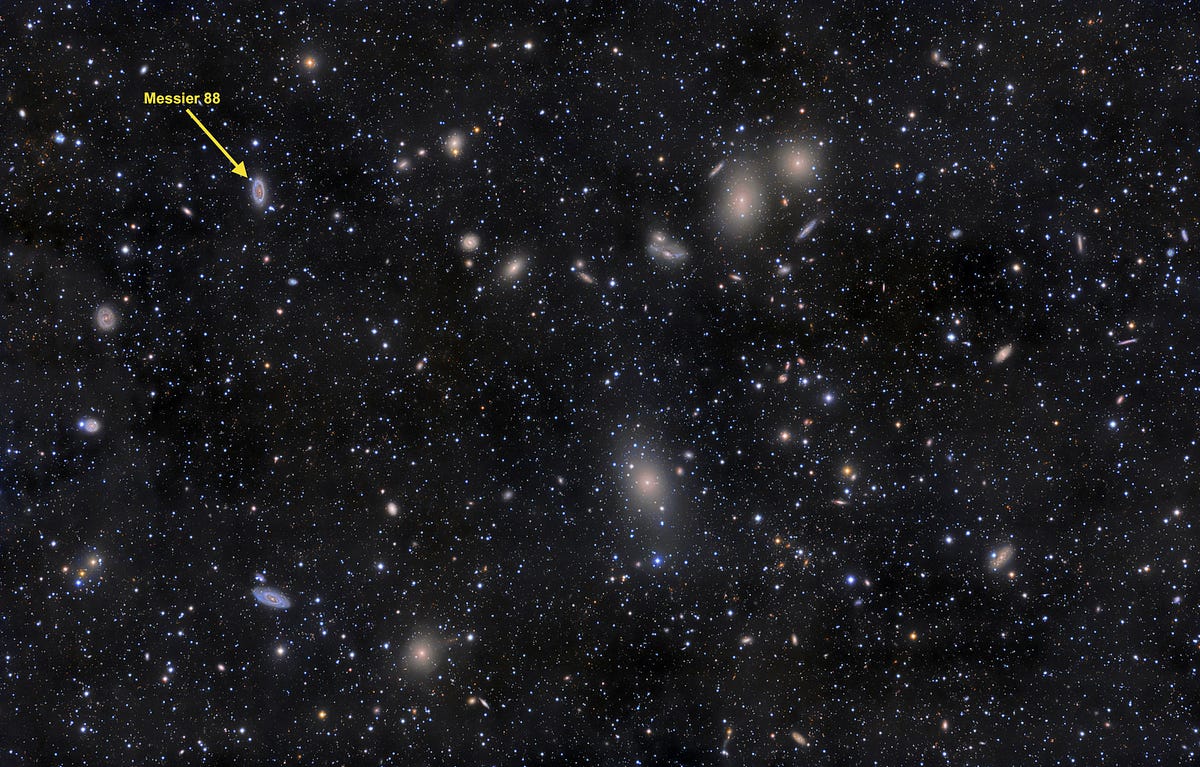
You might wonder, even if this galaxy has managed to remain relatively isolated from mergers and interactions, if there wouldn’t be some effect of speeding through this intergalactic medium so rapidly? The thing is, in a cluster like this, we fully expect there to be — however sparse and tenuous — an intergalactic population of gas, dust and winds, and they should interact with anything moving through it rapidly enough.
If we look in the ultraviolet and infrared combined, we can learn a couple of things.
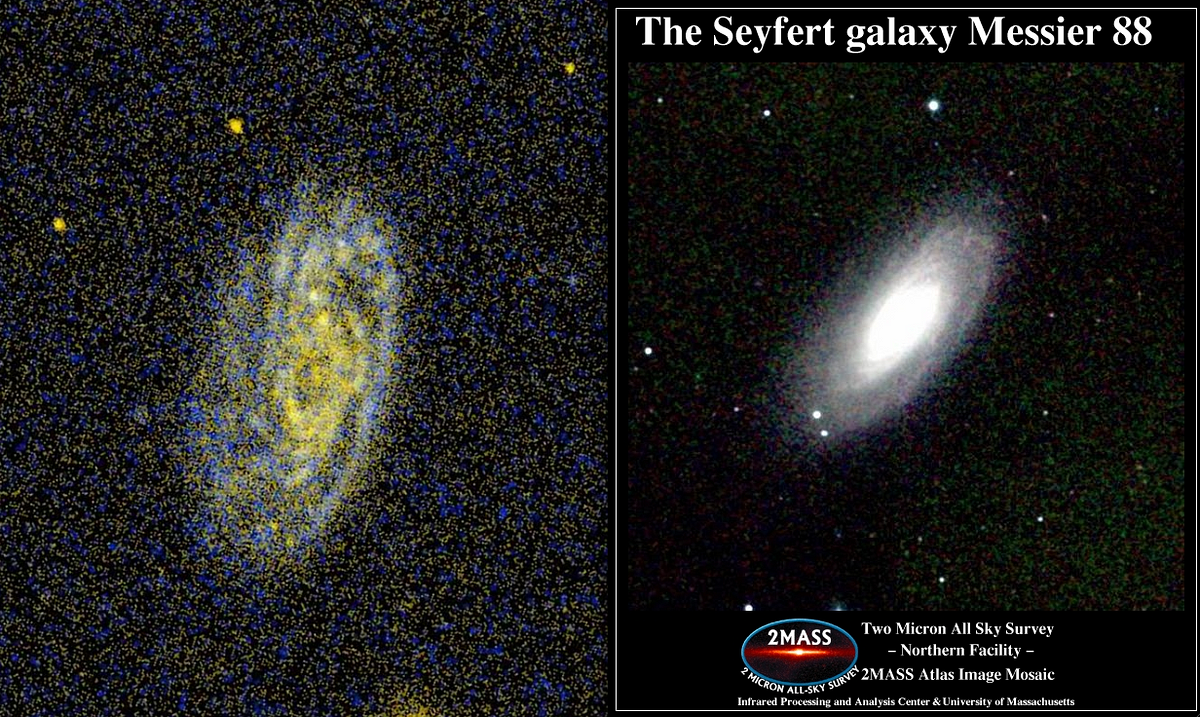
There are new stars forming exactly where you’d expect — traced out along the spiral arms — in the ultraviolet, while the central gaseous region ultra-saturates the image in the infrared. In fact, this central region is really spectacular, and has some properties that a galaxy like the Milky Way or Andromeda can only dream about.
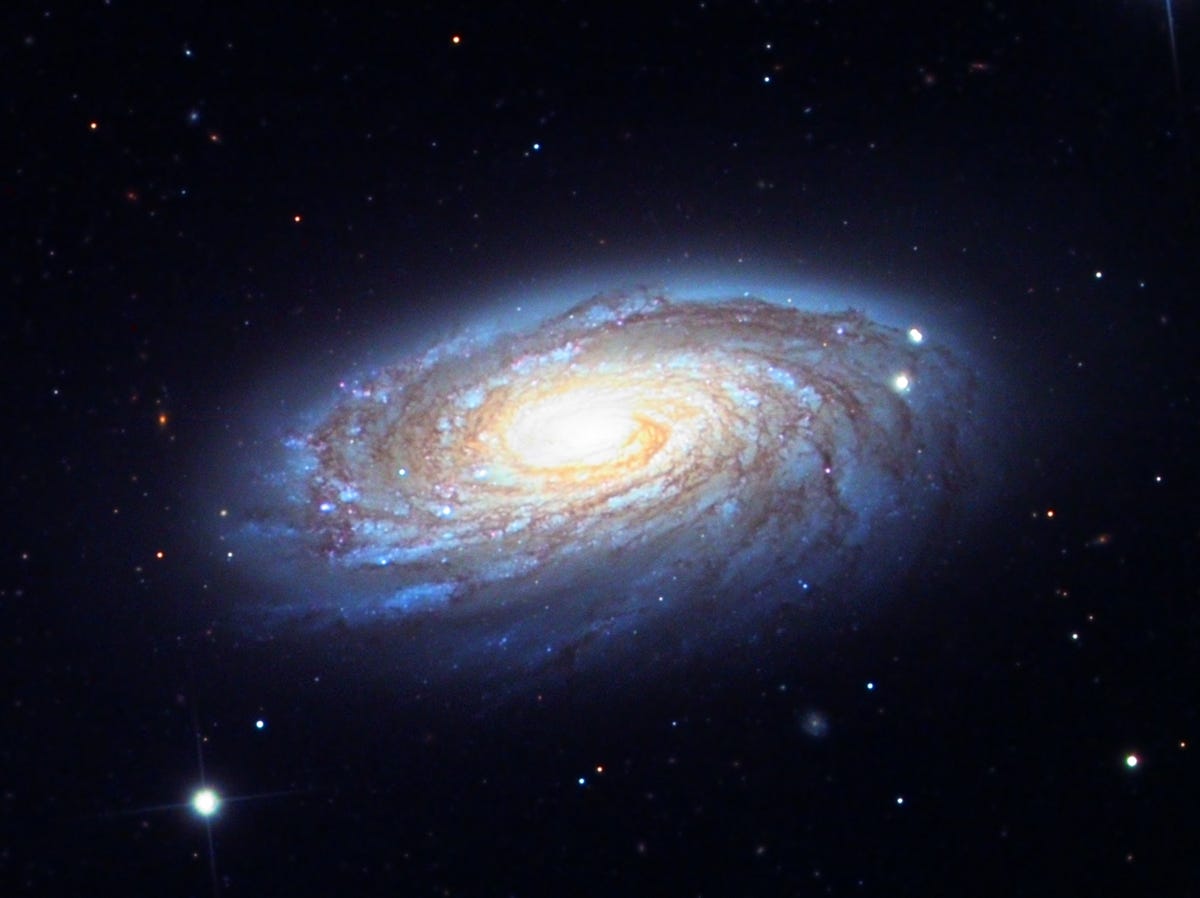
With a central supermassive black hole of nearly 100 million solar masses, it’s maybe 20 times more massive than the biggest one in our own galaxy. In fact, the central region is so hot and massive that the gas at the center is highly ionized, making this a relatively rare Seyfert galaxy!
You might also notice that there appears to be a trail coming off of this galaxy, moving from the top right to the lower left in the image above. It turns out, when you speed through the intergalactic medium at around 1,000 km/s relative to its center-of-mass, it creates ram pressure that can strip the neutral hydrogen right out of your galaxy!
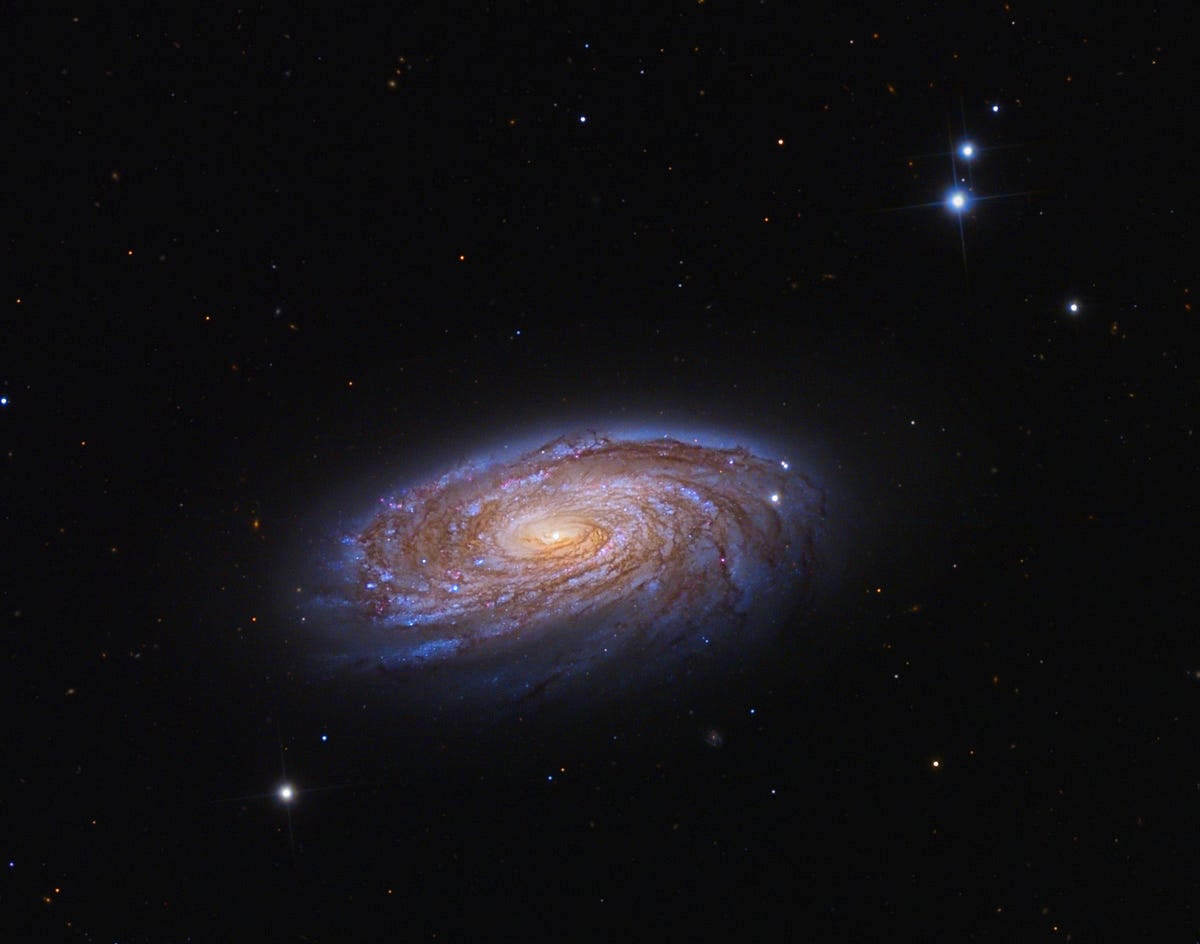
This is really one of the more beautiful galaxies in Virgo, and while the giant ellipticals often get most of the attention, this one will stick around — mostly unperturbed — likely for many billions of years more before something interacts with it in a significant way. And it’s probably been untouched for that long as well; the young stars are concentrated around the outer arms, while the yellow, inner region is indicative of a somewhat older stellar population. The inner portion of the galaxy probably hasn’t seen significant star formation in billions of years, itself.
The last two images I’ve found are both so spectacular, and both from the same 24″ (60 cm) telescope, that I’d like to show you them again at full-resolution even though there’s a Hubble image available.
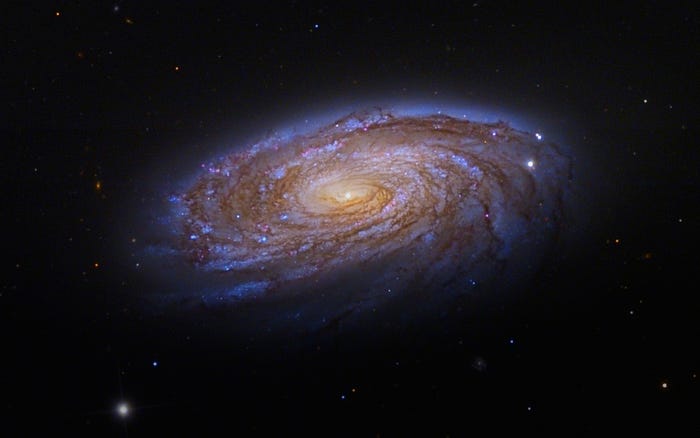
Image credit: Adam Block, Mt. Lemmon SkyCenter, U. Arizona, via http://apod.nasa.gov/apod/ap100130.html.
And finally, I’d be remiss if I didn’t lead you on a fly-through of this galaxy, looking at the gas, dust and starry configurations in spectacular detail!
Fifteen years ago, in 1999, a supernova went off in Messier 88: the only one recorded in the galaxy throughout history. Somewhere in this image lies the star that will be the next one to go. Which one will it be?

That brings us to the end of today’s Messier Monday! On a night like tonight, most of the Messier objects will be visible, so take a look back at all our previous deep-sky wonders:
- M1, The Crab Nebula: October 22, 2012
- M2, Messier’s First Globular Cluster: June 17, 2013
- M3, Messier’s First Original Discovery: February 17, 2014
- M5, A Hyper-Smooth Globular Cluster: May 20, 2013
- M7, The Most Southerly Messier Object: July 8, 2013
- M8, The Lagoon Nebula: November 5, 2012
- M11, The Wild Duck Cluster: September 9, 2013
- M12, The Top-Heavy Gumball Globular: August 26, 2013
- M13, The Great Globular Cluster in Hercules: December 31, 2012
- M15, An Ancient Globular Cluster: November 12, 2012
- M18, A Well-Hidden, Young Star Cluster: August 5, 2013
- M20, The Youngest Star-Forming Region, The Trifid Nebula: May 6, 2013
- M21, A Baby Open Cluster in the Galactic Plane: June 24, 2013
- M25, A Dusty Open Cluster for Everyone: April 8, 2013
- M29, A Young Open Cluster in the Summer Triangle: June 3, 2013
- M30, A Straggling Globular Cluster: November 26, 2012
- M31, Andromeda, the Object that Opened Up the Universe: September 2, 2013
- M32, The Smallest Messier Galaxy: November 4, 2013
- M33, The Triangulum Galaxy: February 25, 2013
- M34, A Bright, Close Delight of the Winter Skies: October 14, 2013
- M36, A High-Flying Cluster in the Winter Skies: November 18, 2013
- M37, A Rich Open Star Cluster: December 3, 2012
- M38, A Real-Life Pi-in-the-Sky Cluster: April 29, 2013
- M39, The Closest Messier Original: November 11, 2013
- M40, Messier’s Greatest Mistake: April 1, 2013
- M41, The Dog Star’s Secret Neighbor: January 7, 2013
- M42, The Great Orion Nebula: February 3, 2014
- M44, The Beehive Cluster / Praesepe: December 24, 2012
- M45, The Pleiades: October 29, 2012
- M46, The ‘Little Sister’ Cluster: December 23, 2013
- M47, A Big, Blue, Bright Baby Cluster: December 16, 2013
- M48, A Lost-and-Found Star Cluster: February 11, 2013
- M49, Virgo’s Brightest Galaxy: March 3, 2014
- M50, Brilliant Stars for a Winter’s Night: December 2, 2013
- M51, The Whirlpool Galaxy: April 15th, 2013
- M52, A Star Cluster on the Bubble: March 4, 2013
- M53, The Most Northern Galactic Globular: February 18, 2013
- M56, The Methuselah of Messier Objects: August 12, 2013
- M57, The Ring Nebula: July 1, 2013
- M60, The Gateway Galaxy to Virgo: February 4, 2013
- M63, The Sunflower Galaxy: January 6, 2014
- M64, The Black Eye Galaxy: February 24, 2014
- M65, The First Messier Supernova of 2013: March 25, 2013
- M66, The King of the Leo Triplet: January 27, 2014
- M67, Messier’s Oldest Open Cluster: January 14, 2013
- M68, The Wrong-Way Globular Cluster: March 17, 2014
- M71, A Very Unusual Globular Cluster: July 15, 2013
- M72, A Diffuse, Distant Globular at the End-of-the-Marathon: March 18, 2013
- M73, A Four-Star Controversy Resolved: October 21, 2013
- M74, The Phantom Galaxy at the Beginning-of-the-Marathon: March 11, 2013
- M75, The Most Concentrated Messier Globular: September 23, 2013
- M77, A Secretly Active Spiral Galaxy: October 7, 2013
- M78, A Reflection Nebula: December 10, 2012
- M79, A Cluster Beyond Our Galaxy: November 25, 2013
- M81, Bode’s Galaxy: November 19, 2012
- M82, The Cigar Galaxy: May 13, 2013
- M83, The Southern Pinwheel Galaxy, January 21, 2013
- M85, The Most Northern Member of the Virgo Cluster, February 10, 2014
- M86, The Most Blueshifted Messier Object, June 10, 2013
- M88, A Perfectly Calm Spiral in a Gravitational Storm, March 24, 2014
- M92, The Second Greatest Globular in Hercules, April 22, 2013
- M93, Messier’s Last Original Open Cluster, January 13, 2014
- M94, A double-ringed mystery galaxy, August 19, 2013
- M95, A Barred Spiral Eye Gazing At Us, January 20, 2014
- M96, A Galactic Highlight to Ring in the New Year, December 30, 2013
- M97, The Owl Nebula, January 28, 2013
- M98, A Spiral Sliver Headed Our Way, March 10, 2014
- M99, The Great Pinwheel of Virgo, July 29, 2013
- M101, The Pinwheel Galaxy, October 28, 2013
- M102, A Great Galactic Controversy: December 17, 2012
- M103, The Last ‘Original’ Object: September 16, 2013
- M104, The Sombrero Galaxy: May 27, 2013
- M106, A Spiral with an Active Black Hole: December 9, 2013
- M108, A Galactic Sliver in the Big Dipper: July 22, 2013
- M109, The Farthest Messier Spiral: September 30, 2013
And come back next week, where we’ll talk about the most spectacular thing you can do with the Messier objects: run the Messier Marathon! See you then!
Say hi and drop us a comment at the Starts With A Bang forum on Scienceblogs!




